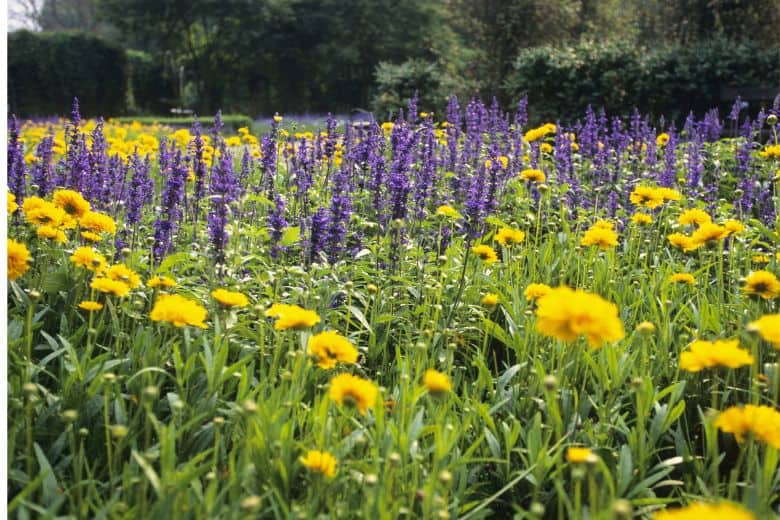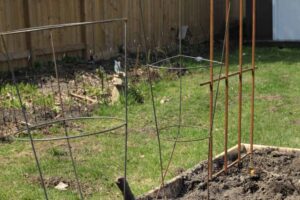
Are you wondering if you can plant lavender and marigolds together in your garden? The simple answer is “Yes”; you can plant lavender and marigolds together. Combining these two magnificent and aromatic plants can result in a stunning display of colors and fragrances.
Today, we will explore the advantages and disadvantages of planting lavender and marigolds together. Besides, provide step-by-step instructions on how to plant them, therefore discuss necessary considerations to keep in mind, address common challenges that may arise, and offer effective solutions.
Let’s get into this comprehensive guide!
Advantages of Planting Lavender and Marigolds Together:
- Pest Repellent: Marigolds, with their strong scent, act as a powerful natural pest repellent. They can deter various garden pests such as aphids, mosquitoes, and nematodes. When interplanted with lavender, which also possesses insect-repellent properties, the combined effect creates a formidable defense against unwanted visitors.
- Attractive Color Combination: The calming purple hues of lavender create a captivating contrast when paired with the vibrant and cheerful colors of marigolds. This visually appealing combination can elevate the overall aesthetics of your garden, making it a feast for the eyes.
- Companion Planting Benefits: Lavender and marigolds are known to attract beneficial insects like bees and butterflies. These pollinators play a vital role in a thriving garden ecosystem, ensuring the pollination of various plants and contributing to bountiful harvests.
Disadvantages of Planting Lavender and Marigolds Together:
- Competition for Resources: Lavender and marigolds have different water and nutrient requirements. Lavender prefers well-draining soil and minimal watering, while marigolds thrive in moist soil. Planting them together without proper management may result in uneven growth or nutrient deficiencies.
- Size and Spacing: Lavender plants can grow quite large, while marigolds tend to be more compact. Without careful planning, the taller lavender plants may overshadow the marigolds, affecting their growth and overall appearance.
How to Plant Lavender and Marigolds Together:
Stage 1: Select the Right Location:
Choose a sunny spot in your garden that receives at least six hours of full sun each day. Both lavender and marigolds thrive in abundant sunlight.
Stage 2: Prepare the Soil:
Ensure the soil is well-draining and enriched with organic matter. Lavender prefers slightly alkaline soil, while marigolds can tolerate a wider pH range.
Stage 3: Planting:
Dig holes for each plant, leaving enough space between them to accommodate their mature sizes. Place the lavender plants at the back or center of the bed, allowing ample room for the marigolds in the front or along the edges.
Stage 4: Watering and Maintenance:
Lavender requires moderate watering until it becomes established. Marigolds, on the other hand, need regular watering to maintain consistently moist soil. Be careful not to overwater the lavender, as it is susceptible to root rot.
Stage 5: Mulching:
Apply a layer of organic mulch around the plants to conserve moisture, suppress weed growth, and regulate soil temperature.
Ideal Growing Conditions for Lavender and Marigolds
Lavender and marigolds are two of the most popular flowers for any garden, both of which thrive in well-drained soil with plenty of sunshine. Both plants have few growing conditions. Have a look.
Growing Conditions for Lavender:
- Sunlight: Lavender thrives in full sun and requires at least 6 to 8 hours of direct sunlight daily.
- Soil: Lavender prefers well-draining soil with a pH level between 6.5 and 7.5. It does best in sandy or loamy soil types.
- Watering: Lavender is drought-tolerant once established and prefers moderate watering. Overwatering can lead to root rot, so it’s important to let the soil dry out between waterings.
- Temperature: Lavender is a hardy plant that grows well in warm climates. It can tolerate some cold temperatures but may suffer damage in severe frost or prolonged freezing conditions.
- Air Circulation: Good air circulation is beneficial for lavender plants. Avoid planting them in areas with high humidity or poor air movement, as it can increase the risk of diseases.
Growing Conditions for Marigolds:
- Sunlight: Marigolds thrive in full sun and require at least 6 hours of direct sunlight daily. They can tolerate some partial shade, but their flowering may be reduced.
- Soil: Marigolds can grow in a wide range of soil types but prefer well-draining soil. They can tolerate slightly acidic to slightly alkaline soil with a pH level between 6.0 and 7.0.
- Watering: Marigolds prefer regular watering to keep the soil consistently moist. However, they do not like soggy conditions, so it’s important to avoid overwatering and ensure proper drainage.
- Temperature: Marigolds are warm-season annuals that thrive in temperatures between 70°F and 85°F (21°C and 29°C). They are not frost-tolerant and should be planted after the last frost date in your area.
- Air Circulation: Similar to lavender, marigolds benefit from good air circulation to prevent fungal diseases.
Avoid overcrowding by giving them enough space between plants:
Lastly, lavender prefers full sun, well-draining soil, moderate watering, and good air circulation. Marigolds also prefer full sun, well-draining soil, regular watering, and adequate air circulation. By providing these optimal growing conditions, you can ensure healthy and thriving lavender and marigold plants in your garden.
Considerations for Planting Lavender and Marigolds Together:
- Soil Compatibility: Lavender favors well-draining soil, while marigolds can tolerate a variety of soil types. Ensure the soil conditions are suitable for both plants to thrive.
- Height and Spacing: Consider the mature height and width of each plant when determining the spacing between them. This will prevent overcrowding and allow sufficient room for each plant to grow.
- Watering and Fertilization: Monitor the watering needs of each plant individually to meet their specific requirements. Avoid over-fertilization, as excessive nutrients can lead to leggy growth and reduced flowering.
Common Challenges and Solutions:
1. Overwatering:
To prevent waterlogged soil and root rot for lavender, ensure proper drainage and water the plants only when necessary.
2. Nutrient Imbalance:
Maintain a balanced fertilizer regimen based on the specific needs of each plant. Regularly conduct soil tests to monitor nutrient levels and make adjustments as necessary.
3. Shade from Lavender:
If the taller lavender plants cast too much shade on the marigolds, consider pruning or staking the lavender to allow more sunlight to reach the marigolds.
Conclusion
By planting lavender and marigolds together, you can create a captivating and visually pleasing garden. The combined benefits of pest repellence, attractive color combinations, and companion planting advantages make this pairing an excellent choice. However, it’s significant to address the challenges of resource competition, size differences, and varying water and nutrient requirements.
By following the planting and maintenance tips outlined above, you can enjoy a harmonious and thriving garden adorned with the enchanting beauty of lavender and marigolds. Happy gardening!
Remember, successful gardening often involves experimentation and adaptation, so don’t hesitate to adjust your approach based on the specific conditions of your garden. Enjoy the process of planting, caring for, and admiring the delightful combination of lavender and marigolds. Your efforts will be rewarded with a garden that exudes beauty, fragrance, and a vibrant ecosystem. Happy planting!







3 Comments